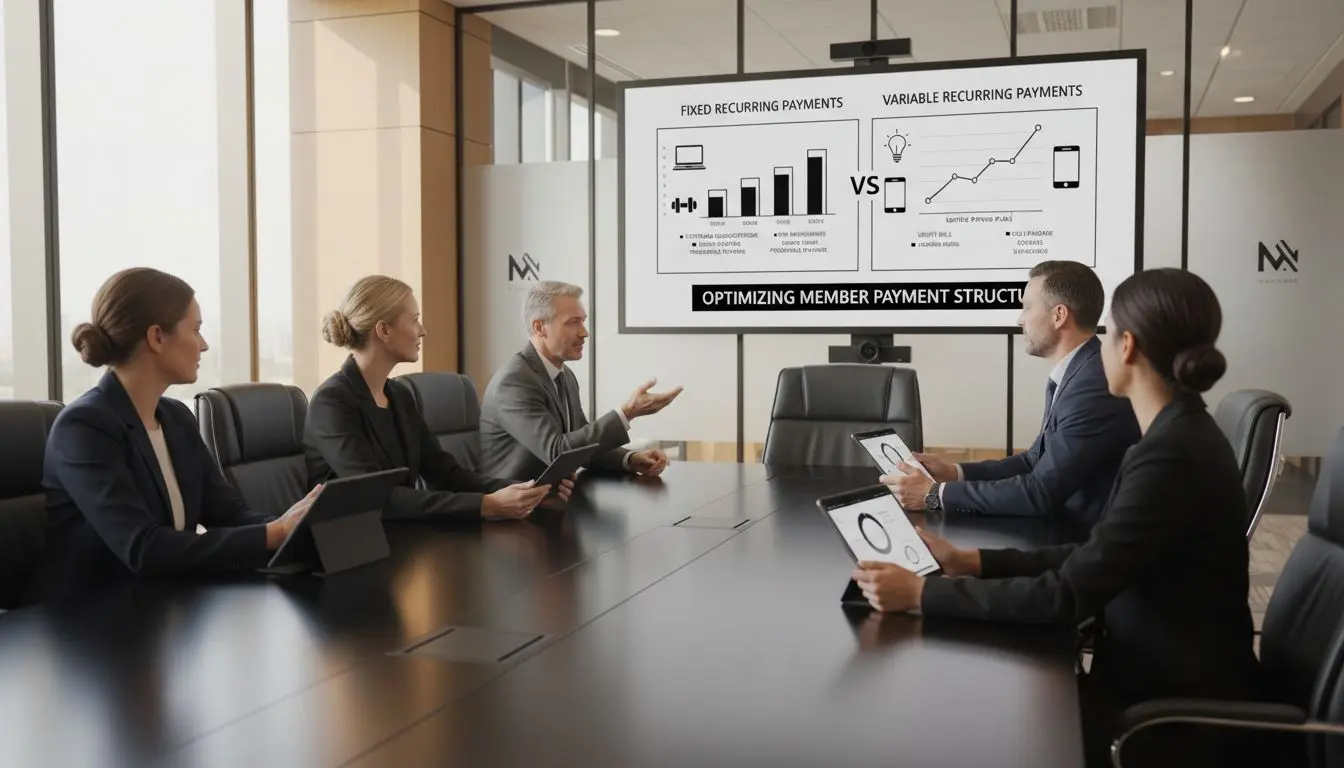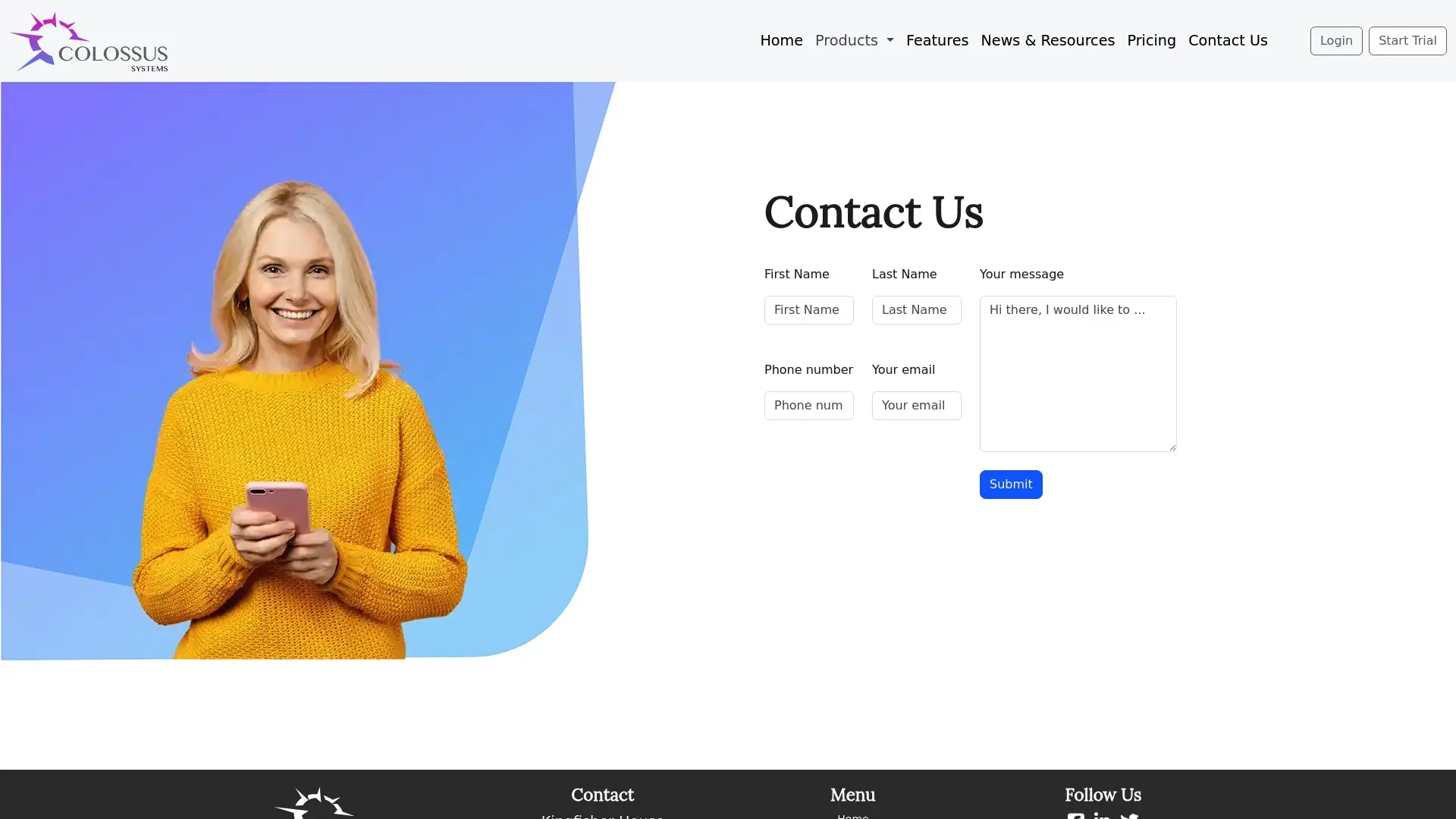Recurring Payment Solutions: Complete Guide for 2024

More than 70 percent of all online businesses now rely on automated billing to handle subscriptions and ongoing services. For organisations managing memberships or frequent payments, manual processes often mean missed deadlines and lost revenue. Automated recurring payment systems remove these barriers, offering dependable transactions that keep operations running smoothly and members satisfied. With robust security measures and flexible payment structures, these solutions have become essential tools for sustaining predictable cash flow and minimizing administrative headaches.
Table of Contents
- Defining Recurring Payment Solutions And Concepts
- Types Of Recurring Payments And Key Use Cases
- How Recurring Payment Systems Work Technically
- Integrating Recurring Payments With Member Management
- Risks, Compliance, And Security Best Practices
Key Takeaways
| Point | Details |
|---|---|
| Automation of Payments | Recurring payment solutions streamline financial transactions, significantly enhancing operational efficiency for organisations by reducing administrative burdens and errors. |
| Types of Payment Models | Understanding the differences between fixed and variable recurring payments helps organisations tailor their financial strategies to meet diverse consumer needs. |
| Technical Framework | Recurring payment systems rely on advanced architectural designs and secure protocols to ensure reliable transaction processing and data protection. |
| Security and Compliance | Implementing robust security measures and adhering to compliance standards is critical for safeguarding member data and maintaining trust in financial operations. |
Defining Recurring Payment Solutions and Concepts
Recurring payment solutions represent sophisticated financial technologies designed to automate periodic transactions for businesses and organisations. According to the World Wide Web Consortium (W3), these systems enable automatic, periodic transactions for goods or services, fundamentally eliminating the need for manual payment initiation by customers.
At their core, recurring payment solutions transform traditional transactional models by providing seamless, predictable billing processes. W3’s Web Commerce Guidelines highlight that these systems are integral to subscription-based business models, facilitating consistent revenue streams while dramatically enhancing customer convenience through automated billing processes.
The architecture of recurring payment solutions typically involves several key components:
- Secure payment gateway integration
- Automated billing scheduling
- Customer payment method tokenisation
- Intelligent transaction retry mechanisms
- Comprehensive reporting and reconciliation tools
For membership organisations and professional associations, these solutions offer unprecedented operational efficiency. By automating financial transactions, organisations can reduce administrative overhead, minimise human error, and create more predictable cash flow cycles. The technology allows members to set up automatic renewals, ensuring uninterrupted access to services and reducing manual intervention.
Understanding the nuanced mechanics of online payment security becomes crucial when implementing recurring payment systems, as robust security protocols protect both organisational and member financial interests.
Types of Recurring Payments and Key Use Cases
Recurring payments represent a diverse landscape of financial transactions, each designed to meet specific organisational and consumer needs. World Wide Web Consortium (W3) identifies two primary categories: fixed recurring payments, where the transaction amount remains constant, and variable recurring payments, which adapt based on usage or dynamic factors.
The spectrum of recurring payment types encompasses several critical use cases. W3’s Payment Roadmap highlights key applications including subscription services for digital content, membership fees for organisations, and utility bill management. These systems provide unprecedented automation and reliability, transforming how businesses and consumers manage financial transactions.
Here’s a detailed breakdown of recurring payment variations:
Here’s a comparison of fixed and variable recurring payment models and their typical use cases:
| Payment Model | Key Characteristics | Common Use Cases |
|---|---|---|
| Fixed | Consistent amount Predictable billing Simplifies budgeting |
Membership dues Software subscriptions Insurance premiums Streaming services |
| Variable | Fluctuating amounts Usage-based charging Dynamic billing cycles |
Utility bills Cloud storage by usage Mobile plans with variable charges Metered professional billing |
- Fixed Recurring Payments
- Consistent monthly membership dues
- Standard software subscription fees
- Regular insurance premium payments
- Fixed-rate streaming service subscriptions
- Variable Recurring Payments
- Utility bills with fluctuating consumption
- Cloud storage services based on data usage
- Mobile phone plans with variable call/data charges
- Metered professional service billing
![]()
For membership organisations, understanding these payment models becomes crucial. By implementing flexible recurring payment solutions, organisations can create seamless financial experiences that reduce administrative burden and enhance member satisfaction. The ability to offer multiple payment structures allows for greater customisation and member engagement.

Understanding the nuanced mechanics of online payment security remains essential when implementing these sophisticated payment mechanisms, ensuring both organisational financial integrity and member trust.
How Recurring Payment Systems Work Technically
Recurring payment systems represent complex technological ecosystems that seamlessly automate financial transactions. GeeksforGeeks reveals that these systems fundamentally rely on sophisticated design patterns like the Observer and Factory Method to manage intricate subscription states and payment processing workflows.
Al-Kindi Publishers emphasises the critical role of event-driven architectures in these systems, which enable asynchronous communication between various technological components. This approach ensures precise, timely processing of payments and instantaneous notifications across different system interfaces.
The technical architecture of recurring payment systems typically involves several interconnected layers:
- Authentication Layer
- Secure user verification
- Payment method tokenisation
- Encrypted credential storage
- Transaction Processing Layer
- Automated billing scheduling
- Payment gateway integration
- Real-time transaction validation
- Notification and Reconciliation Layer
- Automated payment confirmation emails
- Failed transaction management
- Comprehensive financial reporting
For membership organisations, understanding these technical nuances becomes paramount. The system must seamlessly handle variable payment scenarios, from fixed membership dues to dynamically priced services, while maintaining robust security protocols and minimal manual intervention.
Understanding the intricate mechanics of online payment security remains crucial in developing reliable, secure recurring payment infrastructures that protect both organisational and member financial interests.
Integrating Recurring Payments With Member Management
Member management systems are transforming how organisations handle financial interactions through advanced payment integration strategies. Al-Kindi Publishers reveals that seamless integration enables automated billing, sophisticated access control, and personalised member experiences that revolutionise organisational engagement.
GeeksforGeeks highlights that modern integration approaches leverage sophisticated APIs and microservices architectures, ensuring unparalleled scalability and flexibility in managing complex member data and payment information simultaneously.
Key integration strategies include:
- Data Synchronisation
- Automatic membership status updates
- Real-time payment tracking
- Unified member profile management
- Access Control Mechanisms
- Automatic membership tier adjustments
- Dynamically managed service permissions
- Instant access provisioning/revocation
- Financial Reporting Integration
- Consolidated revenue tracking
- Automated invoicing
- Comprehensive financial dashboards
For membership organisations, these integrations mean more than just technical connections. They represent a holistic approach to member relationship management, where financial transactions become seamless, intelligent interactions that enhance overall member experience and organisational efficiency.
To dive deeper into creating robust member ecosystems, explore our comprehensive guide to membership CRM integration, which offers strategic insights into building interconnected membership management systems.
Risks, Compliance, and Security Best Practices
Recurring payment systems demand rigorous security protocols to protect sensitive organisational and member financial data. Communications of the ACM (CACM) emphasises the critical importance of implementing comprehensive security best practices, including robust data encryption, strict adherence to Payment Card Industry Data Security Standard (PCI DSS), and conducting regular comprehensive security audits.
Al-Kindi Publishers highlights the intricate landscape of risk mitigation, revealing that successful payment systems must deploy intelligent mechanisms to address potential challenges such as payment failures and fraudulent activities through sophisticated monitoring systems and compliance with complex financial regulations.
Key security and compliance strategies include:
- Data Protection Mechanisms
- End-to-end encryption protocols
- Tokenisation of sensitive payment information
- Multi-factor authentication systems
- Regular security infrastructure updates
- Regulatory Compliance
- PCI DSS certification maintenance
- GDPR and data privacy standard adherence
- Regular compliance audits
- Transparent financial reporting
- Fraud Prevention
- Advanced transaction monitoring
- Machine learning-based anomaly detection
- Automated suspicious activity alerts
- Real-time risk assessment algorithms
For membership organisations, these strategies represent more than technical requirements. They are fundamental trust-building mechanisms that demonstrate commitment to protecting member financial interests and maintaining organisational integrity.
To understand how risk management extends beyond financial systems, explore our comprehensive guide on event risk management strategies, which provides deeper insights into holistic organisational risk mitigation approaches.
Simplify Your Recurring Payments and Boost Member Engagement Today
Managing recurring payments can feel overwhelming with the need for secure processing, automated billing, and seamless integration with member management systems. This article highlights key challenges such as ensuring payment security, handling fixed and variable subscriptions, and reducing administrative burdens while improving member satisfaction. At Colossus Systems, we understand these pain points and offer a tailored SaaS platform designed to streamline your organisation’s payment workflows, member management, and communication all in one place. Our platform supports secure online payment gateway integration and flexible subscription options so your organisation can focus on growth without worrying about payment hassles.

Ready to transform your recurring payment process and enhance overall member experience with advanced CRM and financial reporting tools? Discover how Colossus Systems can empower your membership organisation to automate payments, manage subscriptions effortlessly, and increase revenue. Connect with us today to build a secure, efficient payment system that works for you by visiting Contact Colossus Systems. To further enhance your organisational success, explore how seamless membership CRM integration can expand your capabilities and ensure complete payment security by reading our insights on understanding online payment security. Take action now to simplify your payment challenges and accelerate your organisation’s growth.
Frequently Asked Questions
What are recurring payment solutions?
Recurring payment solutions are financial technologies that automate periodic transactions for businesses, allowing customers to be billed automatically at set intervals without manual initiation.
What types of recurring payments exist?
There are two primary types of recurring payments: fixed recurring payments, which have consistent amounts (like membership dues), and variable recurring payments, which fluctuate based on usage (like utility bills).
How do recurring payment systems work technically?
Recurring payment systems involve various layers including authentication for secure user verification, transaction processing for automated billing, and notifications for payment confirmations, all designed to ensure accurate and secure financial transactions.
What are the security best practices for recurring payment systems?
Key security best practices include implementing end-to-end encryption, adhering to Payment Card Industry Data Security Standard (PCI DSS) regulations, conducting regular security audits, and deploying advanced fraud prevention mechanisms.